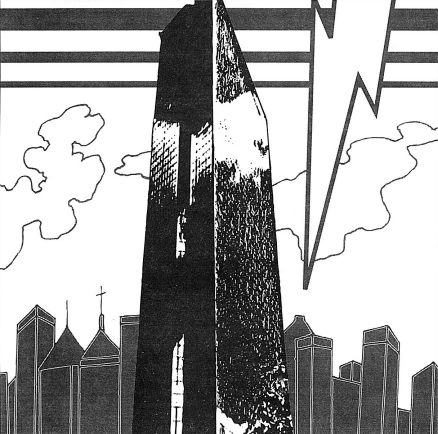Chicago
Chicago, founded by Jean Baptiste Point du Sable in 1833, initially as a town and then as a city in 1837, became known for a surge in gang-related crime in the late 1960s. However, its most devastating period began with the Collapse in the early 2010s, which left the city in absolute devastation, soon compounded by a catastrophic bio-plague.
This bio-plague, initially misidentified as an Ebola derivative, was actually a creation of the Federal Government. Its development stemmed from research at various universities, with the most lethal aspects originating from Heartland. Heartland was a clandestine complex built beneath the University of Chicago during World War II for the Manhattan Project. After its initial research progressed faster than expected, it lay disused until the early 1960s. Prior to the Vietnam War, Heartland was repurposed into a large-scale bio-agent and chemical research facility, receiving billions in funding from the NSC/DIA and becoming the source of most of America's bio-arsenal. Despite its success in biological warfare, Heartland eventually closed due to its cramped and outdated infrastructure, which could not be renovated without disrupting the University, saving the institution millions.
Years after its closure, much of Heartland's work and materials, including samples of deadly diseases, remained on site, untouched. When the worst of the Collapse hit, the government was unable to intervene. Eventually, the NSA sealed the entry corridors with cement and posted bio-hazard warnings before departing to join the Gang of Four's conflict against the government and military. In late 2011, reconstruction efforts at the University of Chicago led to the discovery of the Heartland complex during the demolition of old buildings. Despite bio-hazard warnings, reconstruction companies proceeded with demolition, inadvertently releasing the contained diseases, triggering widespread chaos. Within six months, Chicago was devastated, with a death toll nearing 200,000. While some areas remained habitable, most residents relocated. In the aftermath, the U.S. Military constructed Chicago Port, recognizing the severe impact Chicago's absence had on Great Lakes shipping. Afterward, Chicago remained largely a wasteland, primarily occupied by nomads.
Following the Collapse, Chicago remained mostly in ruins, with an estimated 90% of the city abandoned, reduced to an algae-choked, overgrown landscape of rusted buildings. Its restoration seemed impossible until Storm Technologies Incorporated (StormTech) arrived. Founded by Dr. Richard Storm in the late 1990s, StormTech embarked on the ambitious and lucrative project of reclaiming Chicago. Once the city's toxicity levels became manageable, StormTech secured a lucrative deal with four of the seven Nations to commence reconstruction. Since 2017, StormTech has been sending teams into Chicago to salvage critical resources, slowly reclaiming and rebuilding areas like The Loop and New Town, though other parts of the city remain unfortunatereconstructed. Today, Nomad groups and gangs primarily traverse Chicago seeking livelihoods.
By 2020, Chicago had undergone significant reconstruction and experienced substantial population growth, reaching 8,000,000 residents. It transformed from an abandoned state to become the founding location of Cytech, a company that subsequently expanded globally, providing services in cybernetic implants, manufacturing, holograms, infrastructure, military, and weapons. However, the efforts to reconstruct Chicago were abruptly halted during the Fourth Corporate War when Arasaka detonated virus bombs in the city to prevent it from becoming a Militech stronghold.
By 2077, there's an implication that Chicago had undergone some further reconstruction, as it is mentioned in the context of connecting to Night City via the transcontinental Maglev Network.
Several distinct areas comprise Chicago in this era. The Loop is the ruined downtown area, encircled by elevated train tracks. Most of StormTech's reconstruction efforts have focused here, with locals considering the entire downtown area to be within the Loop. It still contains Pre-Collapse landmarks like the Magnificent Mile, various museums, and luxurious theaters. On Michigan Avenue, old Chicago landmarks such as the Tribune Tower, the Playboy Building, the Old Water Tower, and the John Hancock Center (JHC) remain. The JHC has been central to StormTech's reclamation, fully decontaminated and now serving as their local headquarters, its neon StormTech logo a prominent feature in the skyline.
Beneath downtown lies Emerald City, a network of underground streets traversing almost the entire Loop, illuminated by green fluorescent lights. It is inhabited by the Morlocks, a group with no other way of life. Emerald City receives power from the reconstruction efforts, allowing resourceful Raffens to tap into lighting controls for power. An underground thoroughfare, once lined with restaurants, runs parallel to the Chicago River, separated from the rest of Emerald City by a brick wall with large holes. It now houses "rat-holes," bars, and desperate hiding places, with light pedestrian traffic due to the horrendous smell, especially in summer.
New Town, located on North Rush Street, was once an upscale residential area that fell into disrepair after the Collapse but has since been largely cleaned up. Single-story homes are common, with lawns converted into small vegetable gardens. In the evenings, many nomads work to prepare houses for winter. New Town is home to many families, mostly nomads but also StormTech employees. Disturbances are quickly met with the presence of StormTech and "dog-soldiers," making it well-patrolled at night and lightly during the day.
Old Town, found on the tip of North Wells Street (distinct from North Rush Street), is a two-block stretch resembling its name. It was formerly a residential area filled with two-story brownstone apartment buildings, now mixed with an eclectic collection of businesses. This area serves as a hub for nomads who entertain others, and is the primary location for drinking, wilding, and fighting in the new Chicago. Some "Smart Bars" here serve flavored drinks high in phosphotydle chlorine, a neuro-adrenaline producer, instead of alcohol, and feature a diverse clientele including transvestites and individuals who may appear as attractive women but are biologically male.



Comments